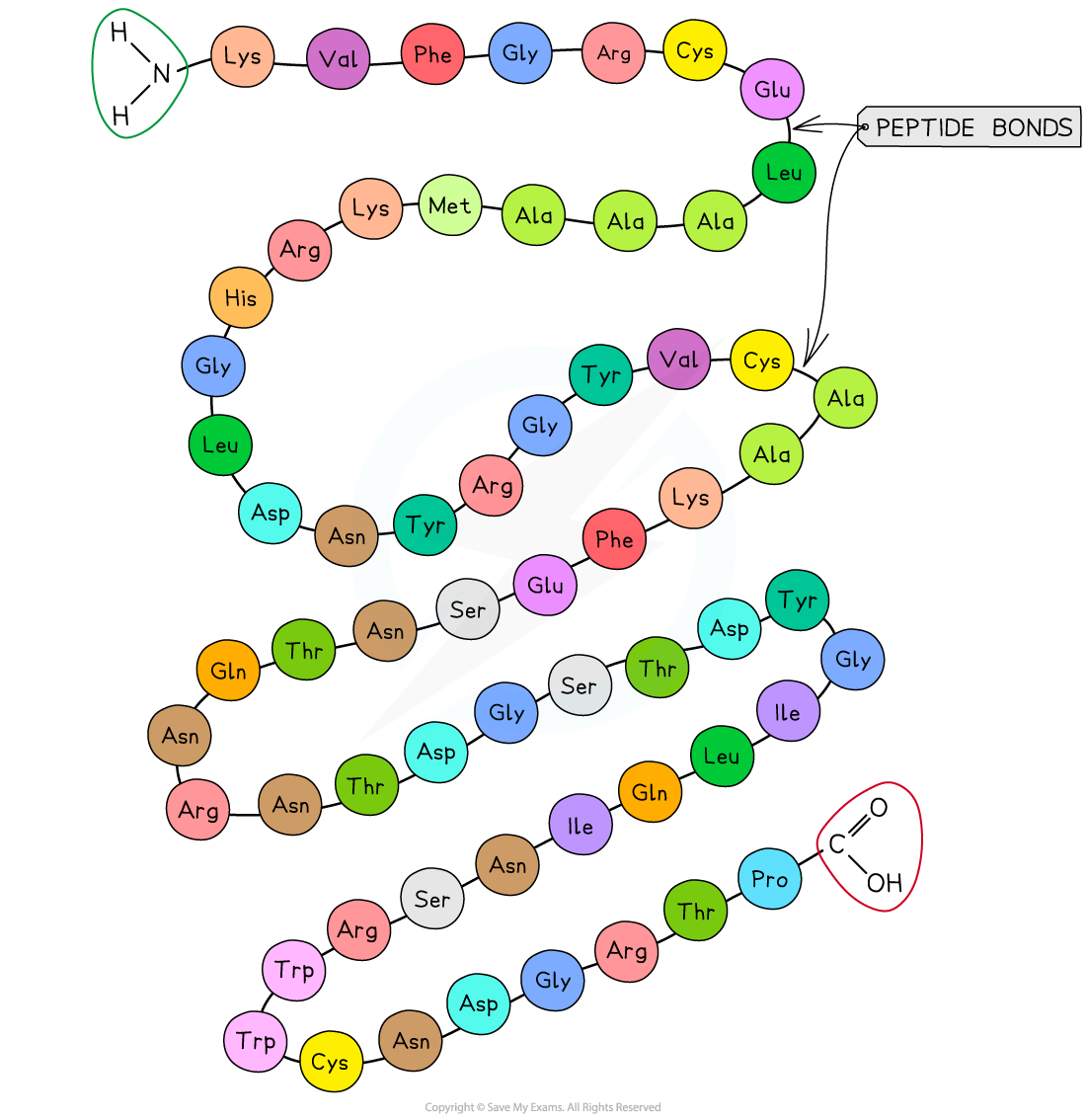Amino Acid Diversity (DP IB Biology) : Revision Note
Amino Acid Diversity
The same 20 amino acids make up most of the proteins found on Earth
Around 500 amino acids have been found in nature, but only 20 are commonly found in proteins
Eleven of these can be naturally synthesised within cells by humans
The other nine amino acids are essential (have to be in the human diet)
You don't need to remember the names of the amino acids, but it's useful to see their names, which are usually abbreviated to three letters
Ala, Arg, Asn, Asp, Cys, Gln, Glu, Gly, His*, Ile*, Leu*, Lys*, Met*, Phe*, Pro, Ser, Thr*, Trp*, Tyr, Val*
* indicates the essential amino acids
Because the R groups vary so much between the 20 amino acids, there is a lot of chemical diversity between the amino acids
Amino acid diversity diagram

An amino acid sequence of a short polypeptide. The three-letter abbreviations indicate the specific amino acid (there are 20 commonly found in cells of living organisms).
R-groups
An R-group, or variable group, is how each amino acid differs and why amino acid properties differ e.g. whether they are acidic or basic, or whether they are polar or non-polar
The R-group can be as simple as another hydrogen atom (forming the amino acid glycine), right through to complex aromatic ring structures (which forms phenylalanine)
It is the R-group that gives the basis of diversity in protein function and form
This occurs because:
All amino acids have a the same carboxyl and amine group, bonded by a central carbon atom, which ionise when in a neutral environment
The carboxyl group donates a hydrogen ion whilst the amine group accepts it so that the carboxyl group is left with a negative charge and the amine group left with a positive charge
The R-group is either hydrophobic or hydrophilic
Hydrophilic R-groups are polar and can be either acidic or basic
Hydrophobic R-groups are non-polar
R-Group Diagram

The variety of R-groups of the amino acids determine the properties of polypeptide chains and therefore overall protein

You've read 0 of your 5 free revision notes this week
Sign up now. It’s free!
Did this page help you?
